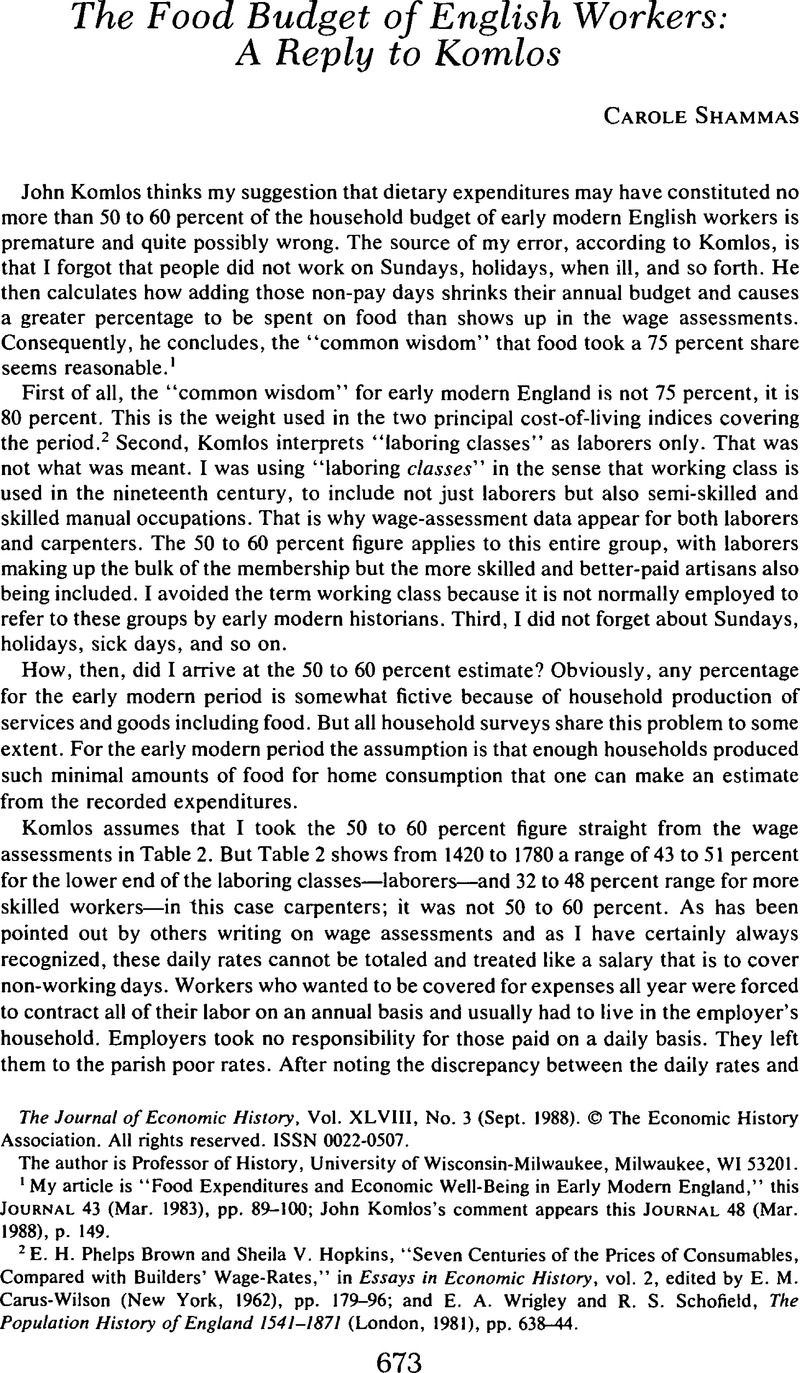No CrossRef data available.
Article contents
The Food Budget of English Workers: A Reply to Komlos
Published online by Cambridge University Press: 03 March 2009
Abstract

- Type
- Notes and Discussion
- Information
- Copyright
- Copyright © The Economic History Association 1988
References
The author is Professor of History, University of Wisconsin-Milwaukee, Milwaukee, WI 53201.
1 My article is “Food Expenditures and Economic Well-Being in Early Modern England,” this JOURNAL 43 (03 1983), pp. 89–100;Google ScholarKomlos, John's comment appears this JOURNAL 48 (03 1988), p. 149.Google Scholar
2 Brown, E. H. Phelps and Sheila, V. Hopkins, “Seven Centuries of the Prices of Consumables, Compared with Builders' Wage-Rates,” in Essays in Economic History, vol. 2, edited by Carus-Wilson, E. M. (New York, 1962), pp. 179–96;Google Scholar and Wrigley, E. A. and Schofield, R. S., The Population History of England 1541–1871 (London, 1981), pp. 638–44.Google Scholar
3 Woodward, Donald, “Wage Rates and Living Standards in Pre-Industrial England,” Past and Present, 91 (05 1981), pp. 28–46.CrossRefGoogle Scholar
4 Minchinton, W. E., ed., Wage Regulation in Pre-Industrial England (Newton Abbot, 1972), pp. 111–19.Google Scholar
5 Shammas, Carole, “The Eighteenth-Century English Diet and Economic Change,” Explorations in Economic History 21 (07 1984), pp. 254–69.CrossRefGoogle ScholarPubMed
6 Weighting the laborers' proportion for diet in the wage assessments (table 2 in my article) as two-thirds and the carpenters' as one-third, then the proportion for all of England jumped from 40 percent in the period from 1450 to 1514 to 52 percent in the period from 1560 to 1600, a 30 percent rise. The Manchester surveys of 1836 to 1841 in my table I show a 25 percent jump (55 percent in stable times to 69 percent in crisis times), but those surveys excluded clothing and many other categories of miscellaneous expenditures, thereby shrinking total expenditures and inflating the proportion for diet in stable times. With those items included, the 55 percent would probably be lower and the jump between about 30 to 33 percent.
7 Minchinton, , Wage Regulation, p. 23.Google Scholar


